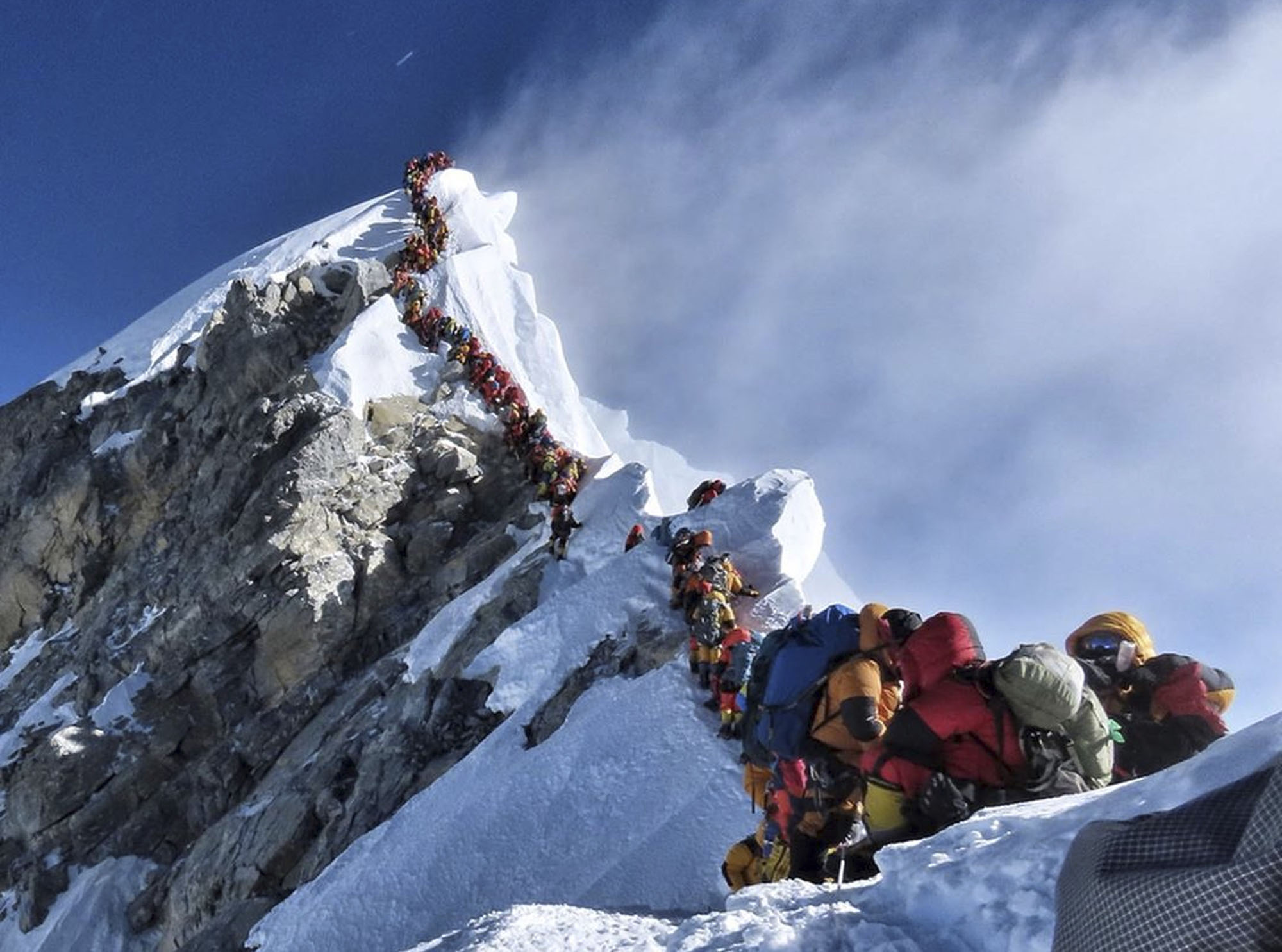There will be two things that people remember about the 2019 spring climbing season on Mount Everest. The first is the death toll. As of May 28, it was 11. The second is a now-iconic image taken near the summit on May 22. In it, dozens of climbers are lined up on a ridge just below the peak, awaiting their chance to stand atop the world's highest mountain. It'd be comical, except that the traffic jam occurred at a deadly, low-oxygen altitude.
The tragedy is that none of this is new. For years, overcrowding on Everest has been well documented. It's a problem compounded by the fact that the mountain is a major source of revenue for Nepal, the base for most ascents. Reforms that restrict the numbers of paying climbers and trekkers are unlikely to make much progress against the economic incentives to increase traffic. Instead, Nepal should seek to invite the private sector to help manage Everest and other peaks. More commercialization, not less, is the best route to promoting safety.
The potential profits are rich. Nepal, a landlocked developing country, earned $643 million from tourism in the 2017-2018 fiscal year, or roughly 3.5 percent of its GDP. Its export sector accounted for $721 million during the same period, but tourism grew faster. Meanwhile, the industry directly employed 452,500 Nepalese in 2016. Understandably, the government would like to increase the business — and quickly. It's targeting 2 million arrivals in 2020, up from 1 million in 2017.



















With your current subscription plan you can comment on stories. However, before writing your first comment, please create a display name in the Profile section of your subscriber account page.